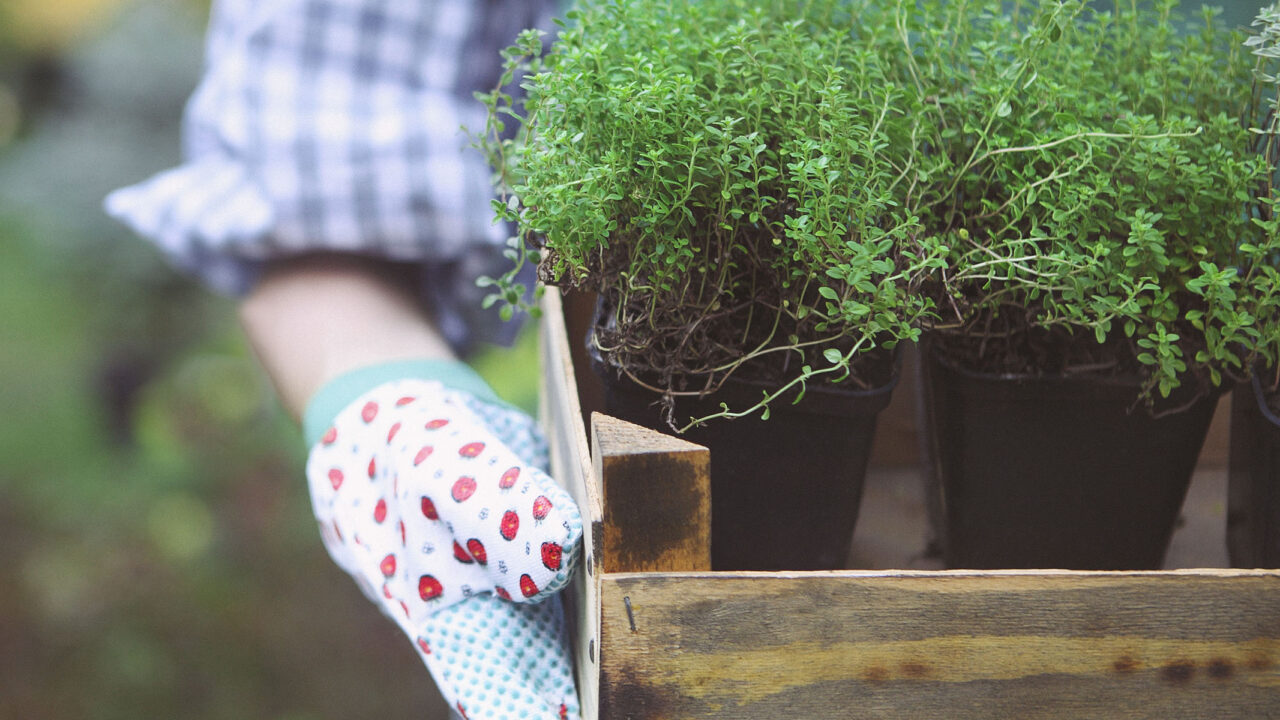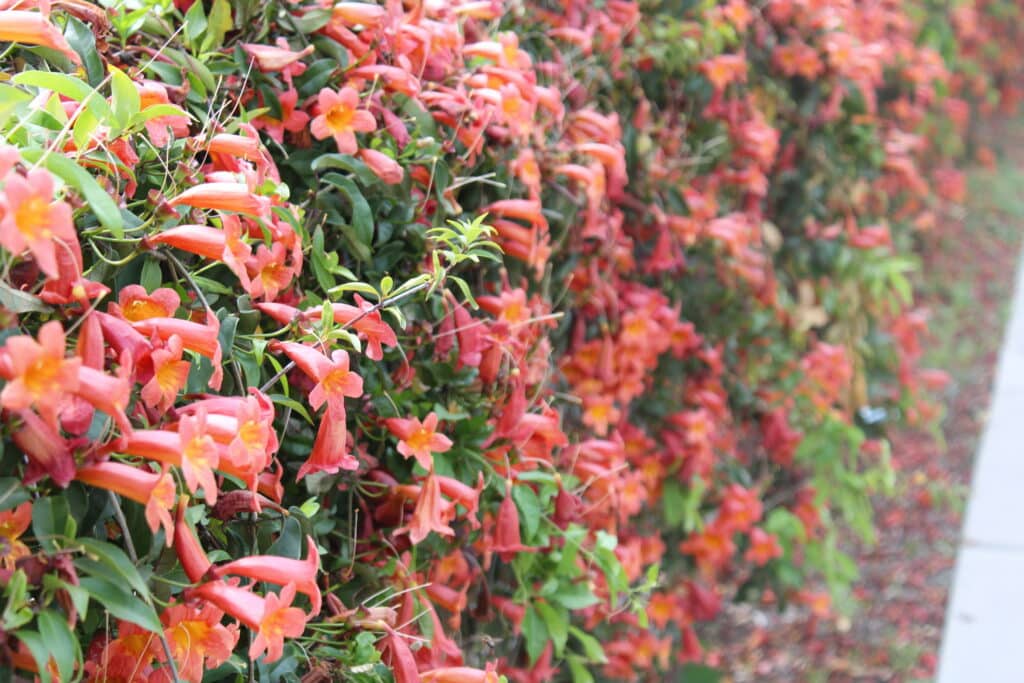
Vines are often overlooked by new gardeners when designing a garden space. Incorporating well-placed vines into your landscape, can not only add visual interest, but it also creates vertical walls that help frame your space. Choosing the right vines for the right place will give your garden an added dimension of interest as well as preserve the beauty of your garden design. Think vertical!
So which variety is best?
Well that depends…. Start by asking yourself a few questions.
- First, define what purpose the vine will serve (it can be more than one).
- attract beneficial insects
- screen or hide an unsightly area
- add color interest with blooms
- vertical walls, soften space, architectural feature
- fragrance
- Determine the area vertically and horizontally you want the vine to cover.
- Do you want it to be green year round or die back in winter?
- Blooms – all summer, just spring, spring through frost?
- Sun, part sun or shade?
- Hardy, tender perennial or annual?
Based on what your needs are, you can then begin to select the appropriate vine. Keep in mind that most vines do require some pruning to maintain their shape and growth habit. For example, I usually prune my Star Jasmine once or twice a year, while others that die back in the winter (referred to as root hardy) can be pruned down to the base and they’ll emerge again in spring. Rangoon Creeper and Mexican Flame vine are good examples.
Recommended Vines for Houston
Here is a list of favorite vines for growing in our area. This list is not complete by any means and if you have favorites you’d like to share, please mention them in the comment section below.
Star Jasmine (Trachelospermum jasminoides) – Also known as Confederate Jasmine, this evergreen vine puts off a show in spring with a flush of bright green new growth and small white fragrant blooms in the shape of a star. A good choice for a trellis where you can shape it as desired.
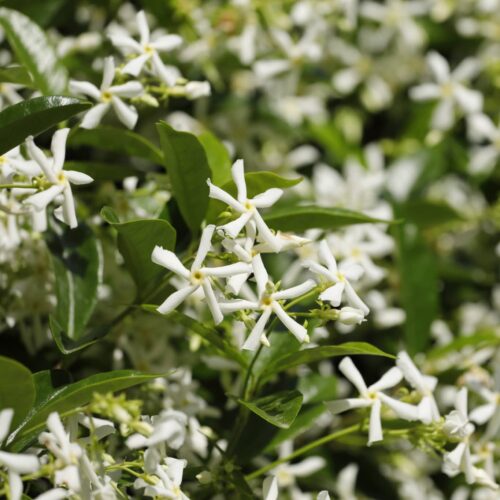
Dutchman’s Pipevine (Aristolochia fimbriata) – Small ground hugging vine that prefers well-draining moist, rich soil. Good as a vine or ground cover with burgundy and yellow orchid-like flowers that bloom late spring to early fall. It is the host plant for Pipevine swallowtail butterfly. The larva will eat the foliage but the plant will recover. It’s a root hardy perennial that will return each spring. Adding this plant will attract more iridescent-blue and black butterflies to your garden.
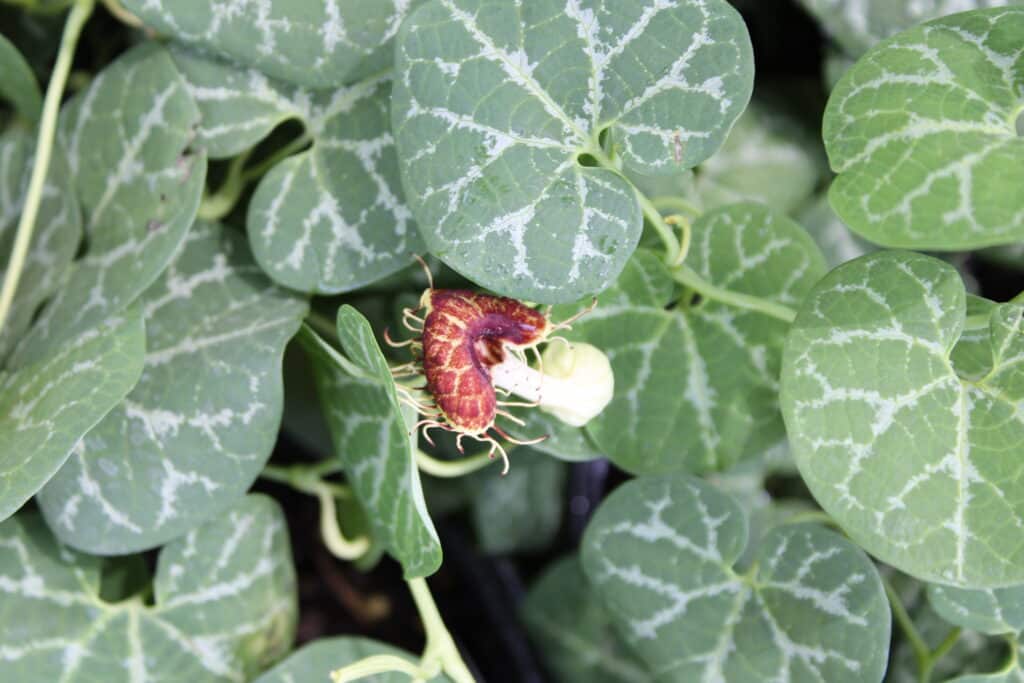
Carolina Jessamine (Gelsemium sempervirens) – Evergreen climber that bursts into bloom in early spring with golden yellow flowers. A native plant with dark green foliage that grows well in sun, partial sun, or bright shade. Would be excellent for year-round coverage on a chain-link fence. Texas Native.

Rangoon Creeper (Quisqualis indica) – Native to tropical Asia this tender perennial vine is a fast grower and may cover a fence easily in one season. Very showy multi-colored trumpet-like flowers of red, pink, and white, this vine is fragrant too. Usually dies back in winter. Prune in late winter/early spring. New growth will emerge from the base in spring.
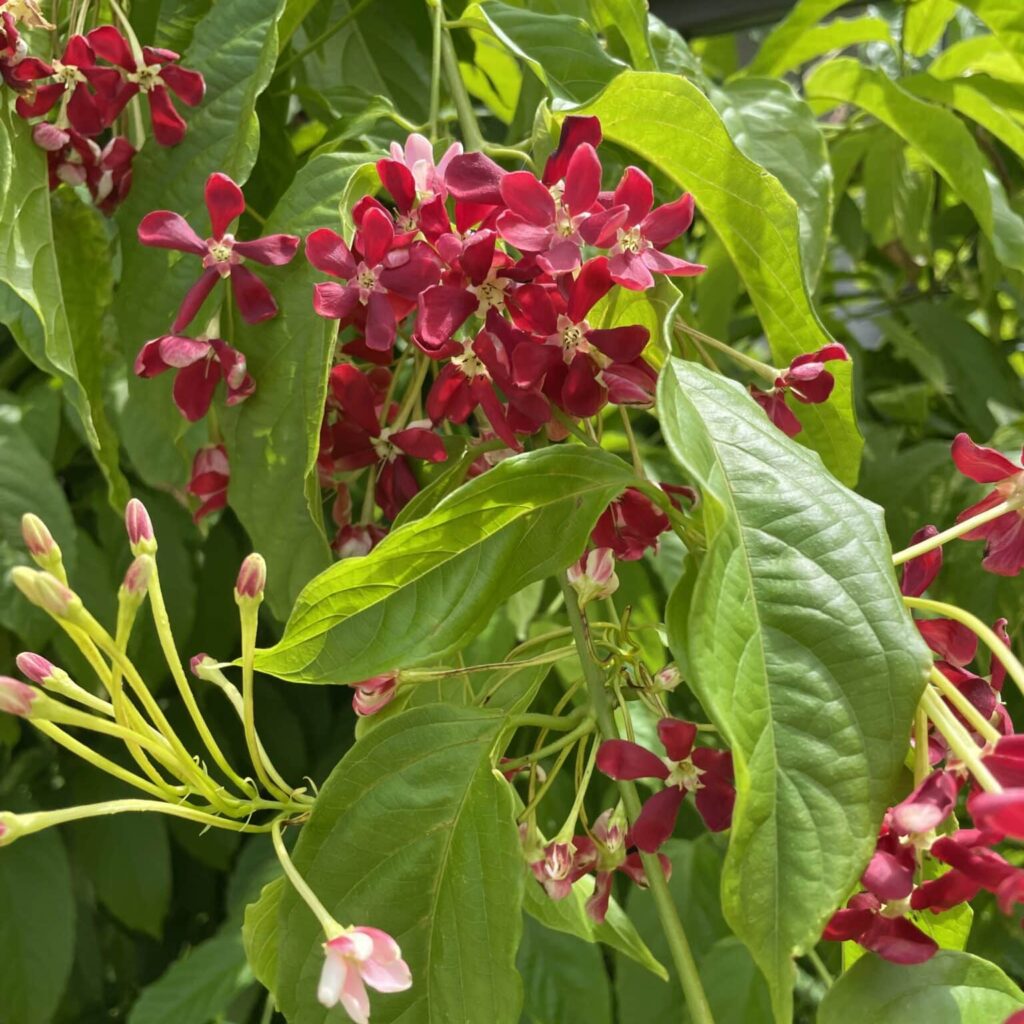
Tangerine Beauty Crossvine (Bignonia capreolata ‘Tangerine Beauty’) – Easy to grow vine that provides abundant 2-inch trumpet-shaped tangerine blooms in late spring, and sporadically in summer. Native, semi-evergreen to evergreen 30’, non-damaging tendrils, sun/part shade. Prefers moist soil with good drainage. Attracts hummingbirds. Texas Native.
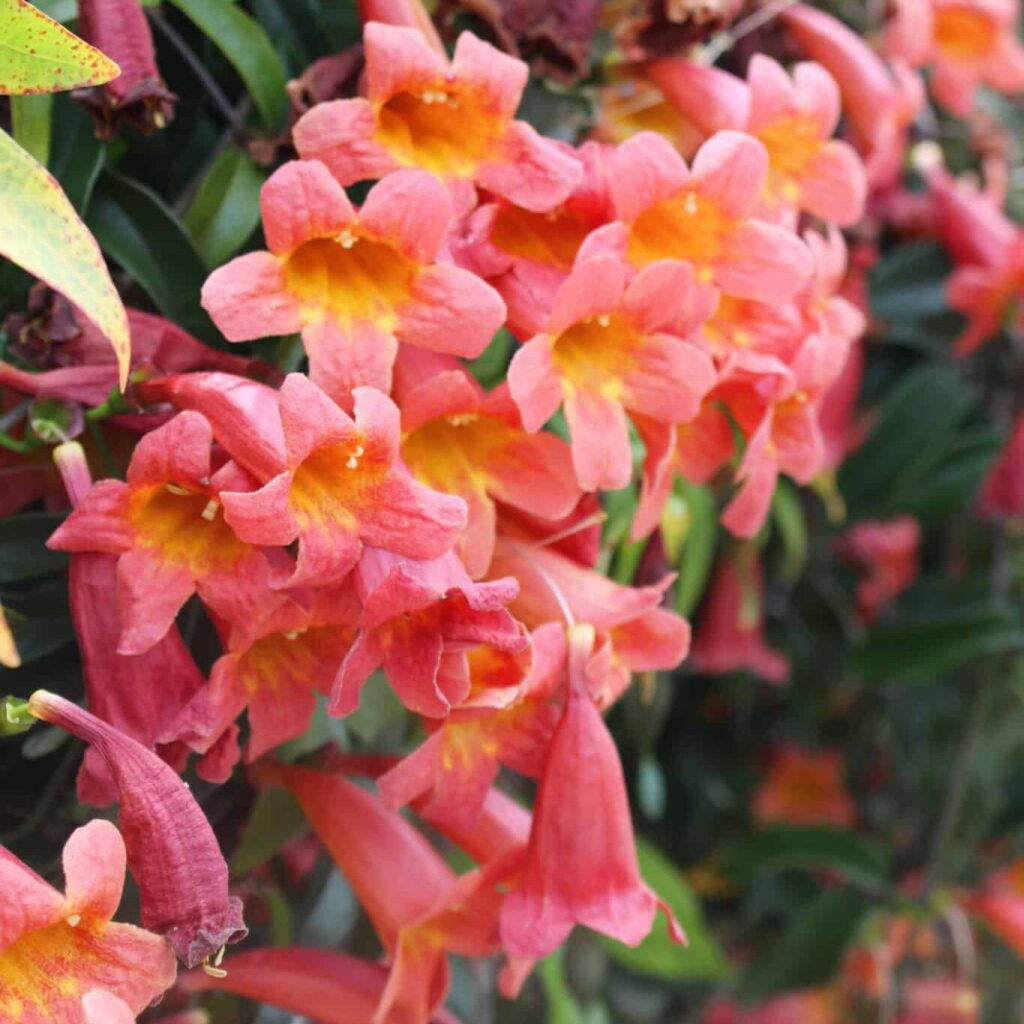
Mandevilla (Mandevilla spp.) Tender woody vine with trumpet shaped flowers. Usually dies back to roots in colder winters, but emerges again in spring from the base. Available in colors in white, pink, and red flowers. Varieties Mandevilla boliviensis (white flowers), Mandevilla sanderi ‘Red Riding Hood’ (red flowers) and Mandevilla x amoena ‘Alice Dupont’ (pink flowers). Full sun to partial shade. Prefers moist soil. Attracts hummingbirds.
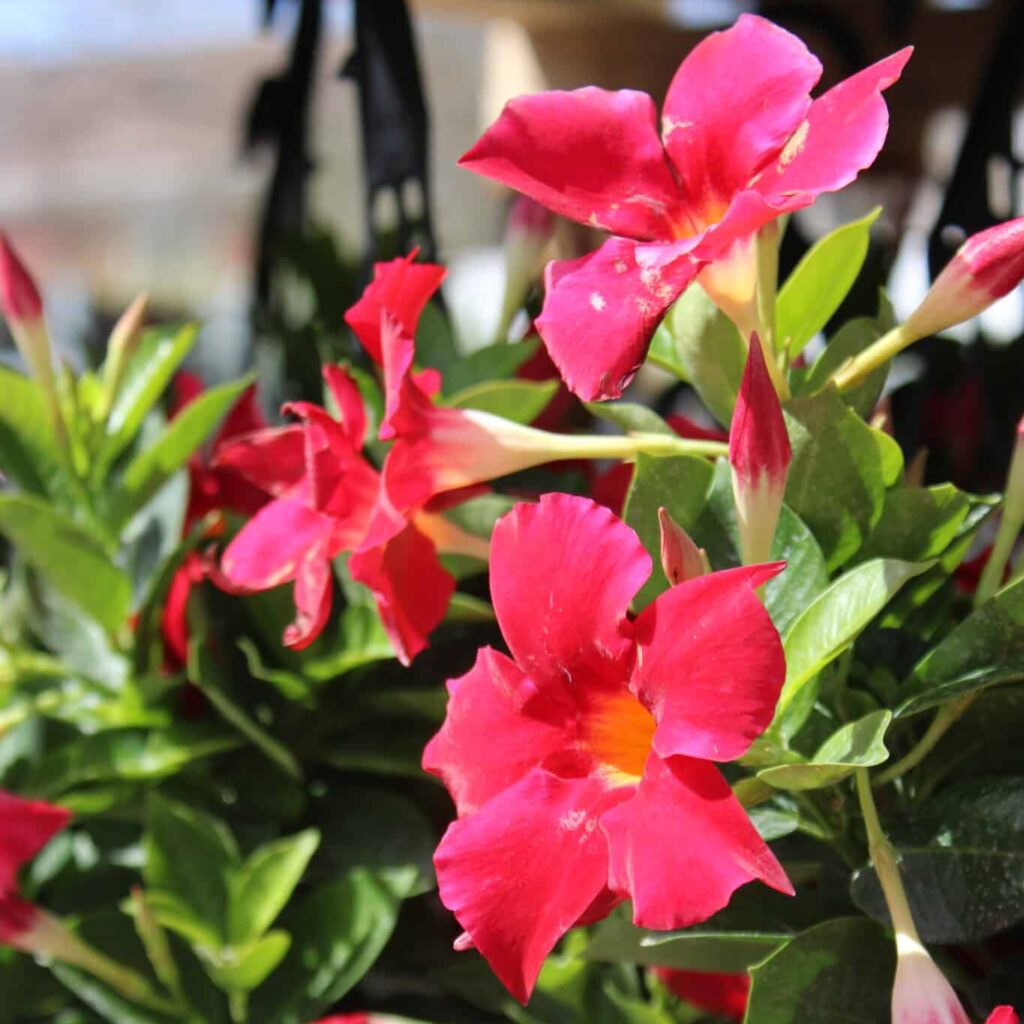
Wisteria ‘Amethyst Falls’ (Wisteria frutescens ‘Amethyst Falls’) – An improved selection of a native American Wisteria vine, not the more aggressive Asian varieties. It has long and deep purple flower clusters and it flowers as a younger plant. Full to part sun.
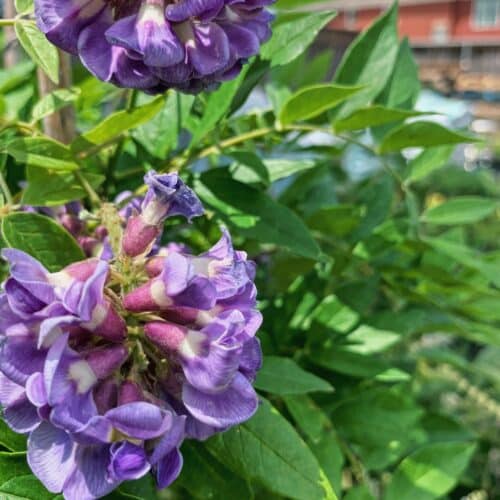
Coral Honeysuckle (Lonicera sempervirens) – Native, tough, deciduous to semi-evergreen, twining climber with clusters of 2-inch coral trumpet-shaped flowers. Blooms heavy in spring with sporadic blooms summer and fall, full sun to bright shade. Produces bright red berries. Attracts hummingbirds. Texas Native.
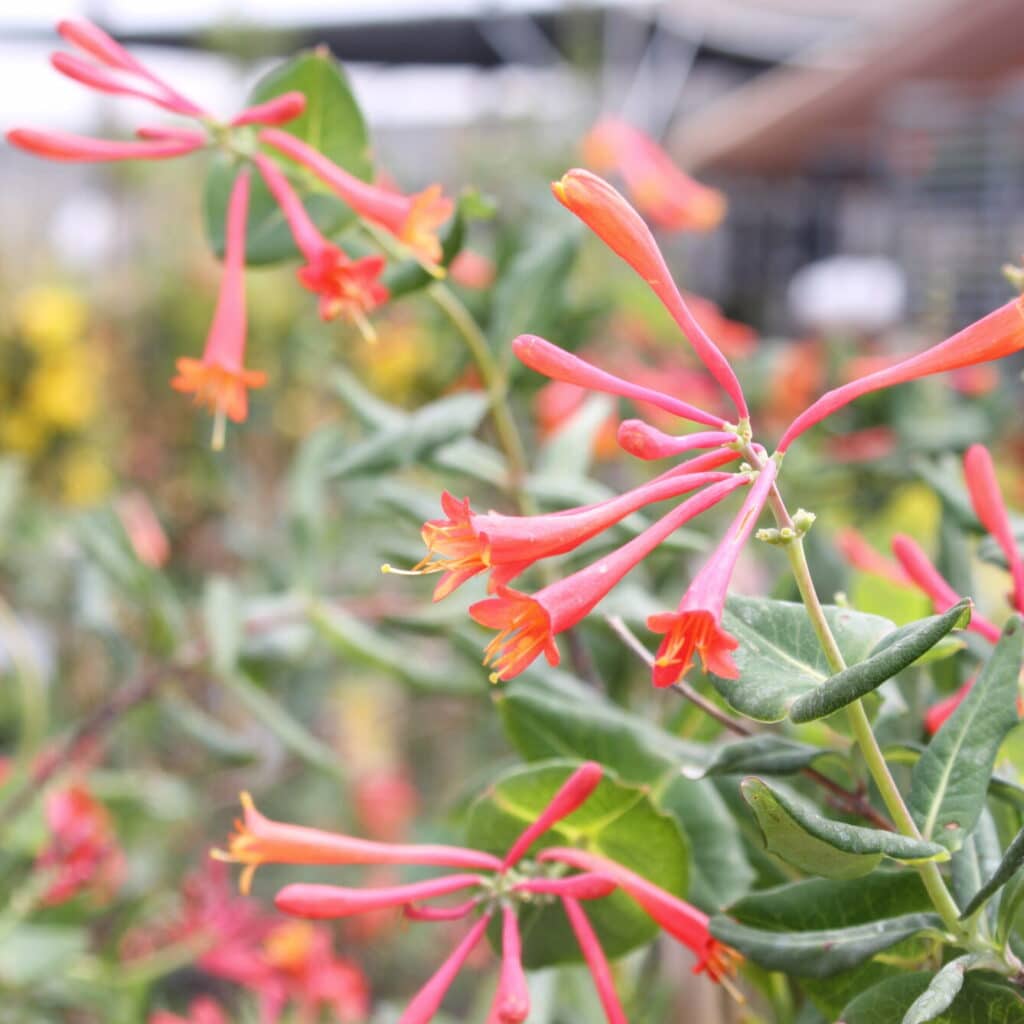
Mexican Flame Vine (Pseudogynoxys chenopodioides) – Synonym name (Senecio confusus). Coarsely toothed, fleshy leaves, foliage darkens to burgundy in fall. Bright orange, daisy-like flowers bloom from spring to fall. Sun/light shade, moist, good drainage, root hardy, loves the heat. Attracts butterflies. Texas Native.

Passion flower (Passiflora spp.) – Passiflora caerulea with sky-blue corollas over white petals is cold hardy in our area. Passion flowers are the host plant for the Gulf Fritillary butterfly. Texas Native.

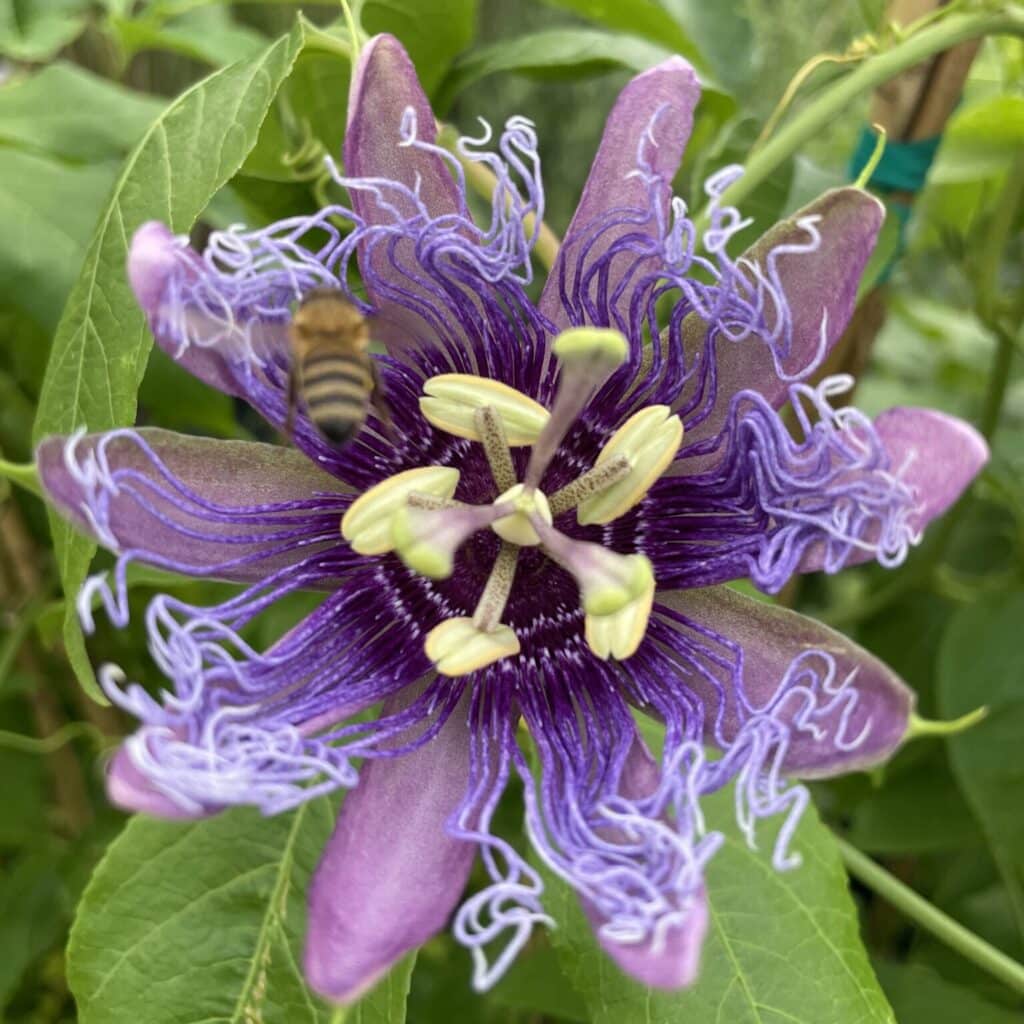
Maypops (P. incarnata) is native to the southeastern US and is better behaved than Passiflora ‘Incense’ (Passiflora incarnata x cinnicata) which is too aggressive (perhaps better suited in a container with a trellis). Check with our staff on which variety would be best for your needs.
Where can you find them?
Buchanan’s stock the vines mentioned in this post, as well as others, so come by and see them for yourself. Our staff will help you choose the right vines for your garden.
Tips for Growing Vines
Support
Provide adequate support for the weight and size of the vine through the use of a trellis, arbor, pergula, fence or wall.
Pruning
Cut back root hardy vines in early spring – if needed all the way down to the base of the plant. It will regrow again. Evergreen or semi-evergreen vines can be pruned to shape throughout the growing season. If you prefer a more informal look, like that of an English cottage garden, then choose vines with a free flowing growth habit.
Starting vines on a trellis
Whether you are planting your vine in a container or in a garden bed, training the vine to grow up a trellis is fairly easy. Some attach quickly with tendrils (a specialized stem, leaf or petiole – threadlike shape used by climbing plants for support and attachment) while others will need some help. Try weaving them in and out of the trellis by hand to get them started or using soft twine or green flexible tape to attach them. It is a good idea to check on them weekly and continue to wrap or attach the vines as they grow.
Architectural features
Adding a trellis, arbor, pergola, or gazebo to your landscape will ground your space and provide a dramatic focal point. The scale of your garden will determine the size needed.
Arbors are often used over the entrance to a garden. A doorway into another room.
A large patio container with a trellis can do wonders to create an intimate seating area. The possibilities are endless.
Consider an evergreen vine on a trellis to break up a large brick or stone wall. It will help to cool your garden and provide year-round interest and shelter for wildlife.
CONSIDERATIONS: Avoid the temptation to cover fences with vines just for the sake of it. Perhaps a container and trellis or just a trellis can produce the same visual effect while still preserving the architectural element of structure the fence provides. Black wrought iron fences often look perfectly lovely just as they are without being covered in vines, while a chain-link fence might be a good candidate for a vine. Consider the aesthetic value of your fence and future maintenance when deciding.
Resources and Other Links:
10 best vines for Houston arbors – Chron.com
Treesearch Farms – Vines List
